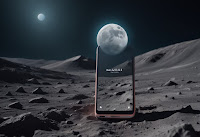Nokia and NASA collaborate to launch 4G LTE on the moon by the end of 2024. This is a big step forward for space exploration, as it will allow astronauts to communicate with each other and with Earth more easily and reliably. It will also enable the development of new technologies that require high-speed data transmission, such as remote robotics and virtual reality.
The Nokia 4G network will be deployed on the south pole of the moon, where it will be able to provide coverage of a large area. The network will consist of several base stations that will be connected to each other by means of feedback channels. These base stations will be powered by solar panels and will be able to operate in extreme temperatures.
The first Nokia 4G base station is scheduled to be launched on the moon at the end of 2024. After deployment, testing and commissioning of the network will take several months. Once operational, however, it will provide a major boost to lunar exploration efforts.
The Nokia 4G network will have a number of advantages for astronauts. This will allow them to make voice and video calls to Earth, send and receive text messages, and access the Internet. It will also allow them to stream videos and music as well as play online games. This will help improve the morale and well-being of astronauts, who are often isolated and alone for long periods of time.
The Nokia 4G network will also have a number of benefits for scientists and engineers. This will allow them to transmit experiment data to Earth faster and easier. It will also allow them to remotely control robots and other equipment. This will allow conducting new types of research and developing new technologies.
The deployment of Nokia 4G on the moon is a major milestone in space exploration. It is a testament to human ingenuity and our never-ending quest to explore the universe.

Comments
Post a Comment